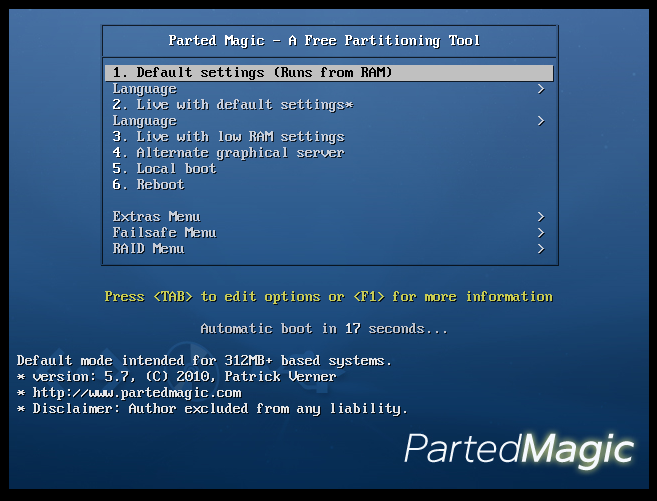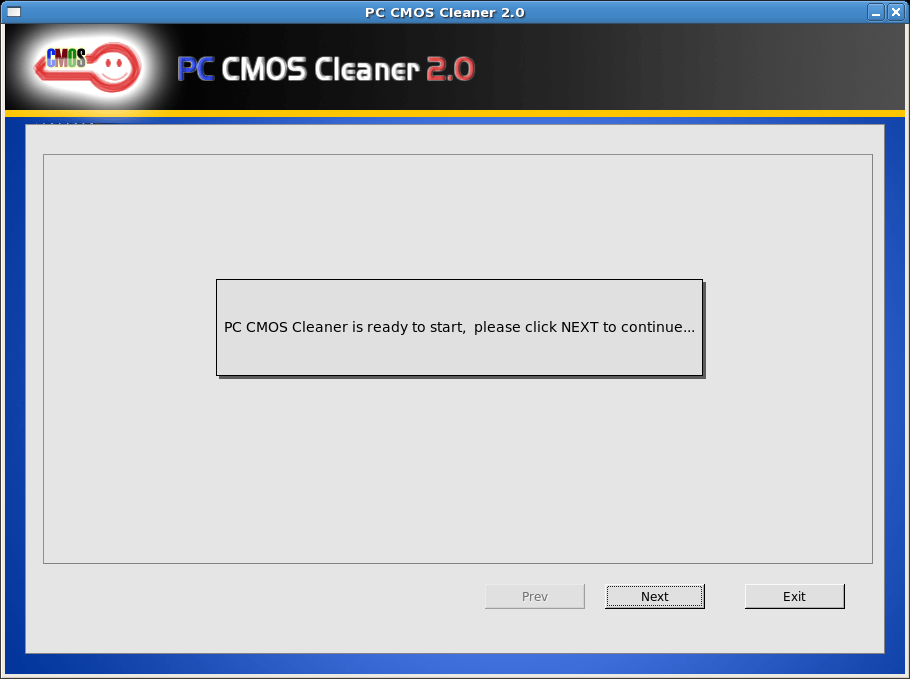

Here are some tools which can be used by booting from the relevant CD or USB flash drive.

Even if you don’t want it for this purpose, Plop is a great tool to know about for using on older computers. What it does is allow booting from these devices even if the system BIOS doesn’t support the function or the boot order is not accessible. If you can still access Windows, another solution to enable CD/USB booting is using a great tool called Plop Boot Manager. It’s also possible that CD or USB booting could be just below hard drives in the order, in which case you would need to temporarily disconnect the hard drive(s).
#PC CMOS CLEANER ISO FREE DOWNLOAD WINDOWS#
If everything is good, turn off your computer, return the jumper to its original position, and then turn the computer back on.When Windows doesn’t boot properly and you cannot get into the BIOS to change the boot order, you could be lucky enough that booting to CD or USB might already be set at a higher priority than booting to Windows and simply inserting a CD or flash drive will boot to it automatically.
#PC CMOS CLEANER ISO FREE DOWNLOAD PASSWORD#
Turn the computer back on and make sure that the BIOS settings have reset, or the system password is now cleared - if that's why you were clearing CMOS. Any confusion here can be cleared up by checking the CMOS clearing steps outlined in your computer or motherboard manual. Move the little plastic jumper from the 2 pins it's on over to the other pins (in a 3-pin setup where the center pin is shared) or remove the jumper entirely if this is a 2-pin setup. Some other names by which you might see this jumper labeled include CLRPWD, PASSWORD, or even just CLEAR. These jumpers are often located near the BIOS chip itself or next to the CMOS battery. Look around your motherboard's surface for a jumper (as shown in the picture) with the CLEAR CMOS label, which will be located on the motherboard and near the jumper. Make sure your computer is unplugged and then open it up. Most desktop motherboards will have a jumper like this but most laptops and tablets will not. Yet another way to clear the CMOS is to short the CLEAR CMOS jumper on your motherboard, assuming your motherboard has one. Clearing CMOS, in this case, involves popping the battery out and then putting it back in.

Clearing CMOS, in this case, involves unplugging the white connector from the motherboard and then plugging it back in.ĭesktops: The CMOS battery in most desktop computers is much easier to find and looks just like a standard cell-type battery like you'd find in small toys or traditional watches. This is an increasingly common way that manufacturers of small computers include a CMOS battery. Laptops & Tablets: The CMOS battery shown here is wrapped inside a special enclosure and connects to the motherboard via the 2-pin white connector. Close the case or battery panel and then plug in, or reattach the computer's main battery.īy disconnecting and then reconnecting the CMOS battery, you remove the source of power that saves your computer's BIOS settings, resetting them to default. Sometimes you will need to remove the whole back cover.įinally, remove the CMOS battery for a few minutes and then put it back in. Instead, it may be in the same compartment where you will find the hard drive(s) and/or RAM memory chips and/or Wi-Fi radio(s). Some may have a small battery compartment with its own cover, but many don't.


 0 kommentar(er)
0 kommentar(er)
